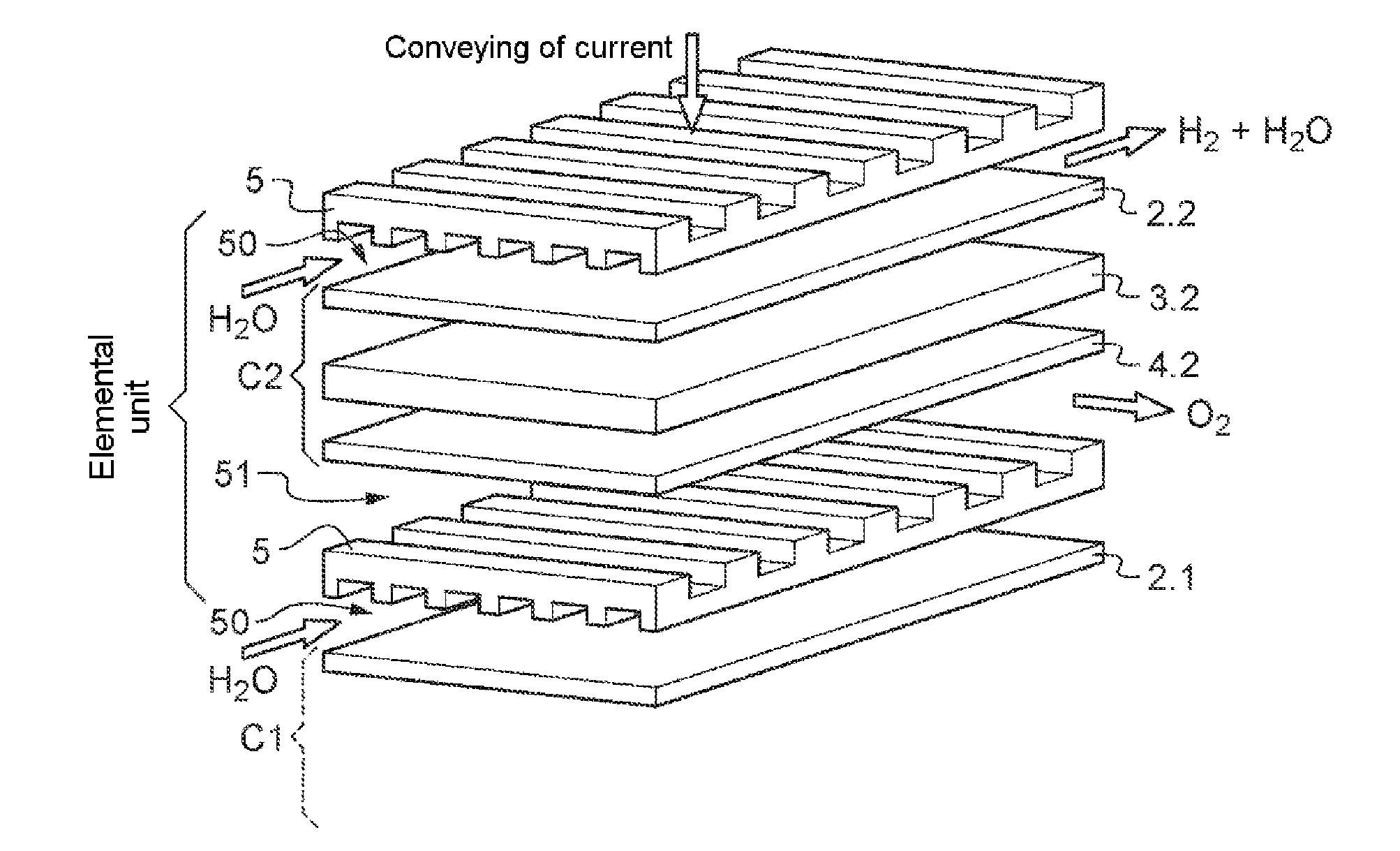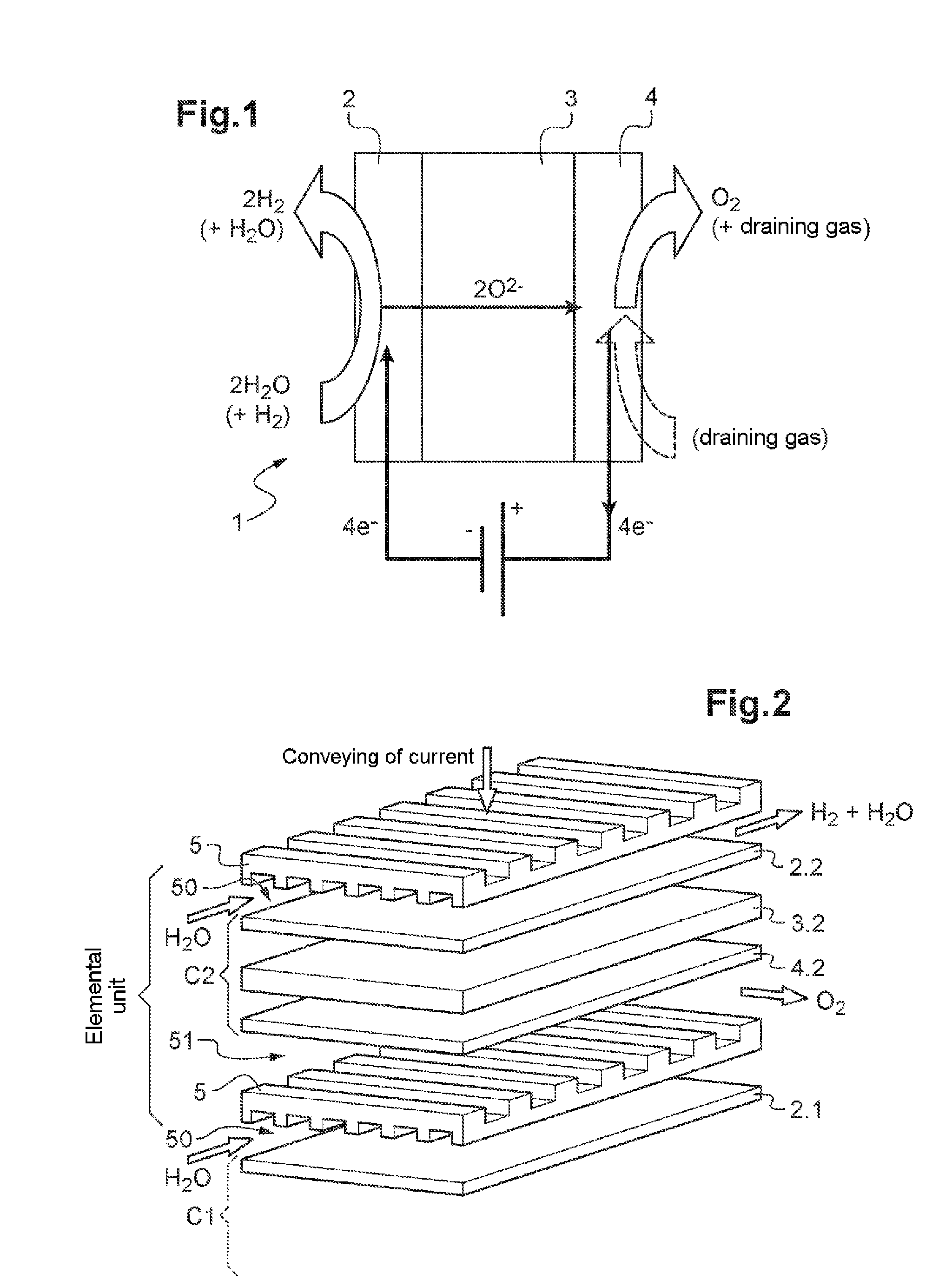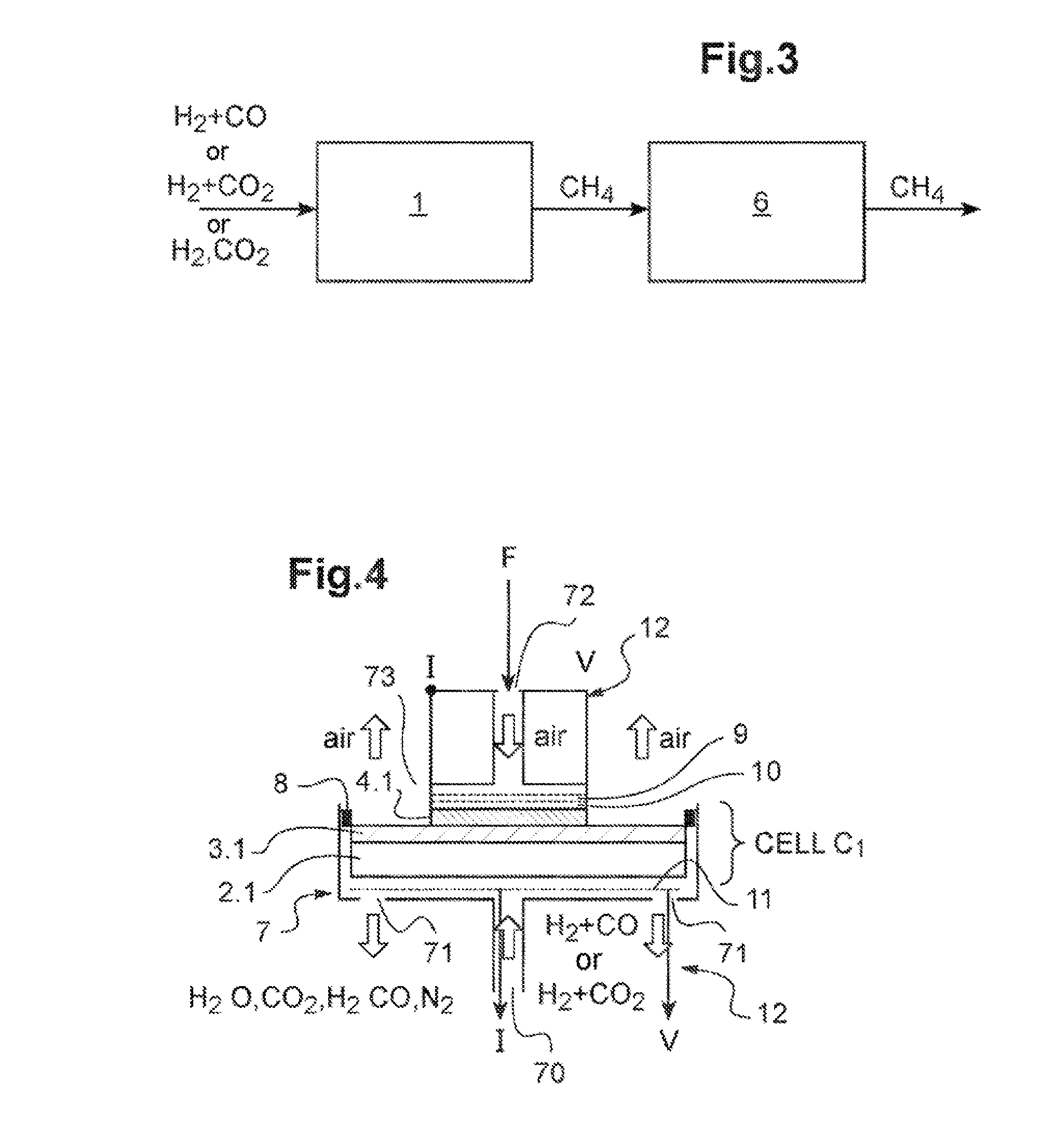Method for operating an soec-type stack reactor for producing methane in the absence of available electricity
a stack reactor and soec technology, applied in the field of methane production, can solve the problems of hydraulic system, high cost, and risk of remaining capacity of this type of storage, and achieve the effect of improving the process
- Summary
- Abstract
- Description
- Claims
- Application Information
AI Technical Summary
Benefits of technology
Problems solved by technology
Method used
Image
Examples
Embodiment Construction
[0070]Other advantages and characteristics of the invention will emerge more clearly on reading the detailed description of exemplary embodiments of the invention given by way of nonlimiting illustration with reference to the following figures among which:
[0071]FIG. 1 is a diagrammatic view showing the operating principle of a high-temperature water electrolyzer,
[0072]FIG. 2 is an exploded diagrammatic view of a part of a high-temperature steam electrolyzer comprising interconnectors,
[0073]FIG. 3 is a diagrammatic view of a process for producing methane from methanation step b / of the process of an SOEC reactor according to the invention,
[0074]FIG. 4 is a diagrammatic view of an experimental SOEC reactor with a single electrochemical cell making it possible to carry out methanation step b / of the process according to the invention,
[0075]FIGS. 5A to 5C illustrate the production of the various species during methanation step b / of the process according to the invention, using syngas, ...
PUM
 Login to View More
Login to View More Abstract
Description
Claims
Application Information
 Login to View More
Login to View More - R&D
- Intellectual Property
- Life Sciences
- Materials
- Tech Scout
- Unparalleled Data Quality
- Higher Quality Content
- 60% Fewer Hallucinations
Browse by: Latest US Patents, China's latest patents, Technical Efficacy Thesaurus, Application Domain, Technology Topic, Popular Technical Reports.
© 2025 PatSnap. All rights reserved.Legal|Privacy policy|Modern Slavery Act Transparency Statement|Sitemap|About US| Contact US: help@patsnap.com



